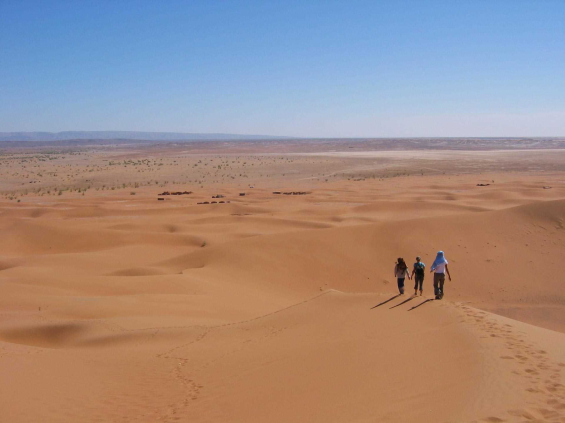Over nearly a century, the Sahara, the largest hot desert in the world, has expanded by 10%. This expansion, revealed by a study from the University of Maryland published in the Journal of Climate, is partly attributed to climate change, with major consequences for the surrounding ecosystems and populations.
The study, which analyzed precipitation between 1920 and 2013, shows that the Sahara is gradually encroaching on the Sahel, a semi-arid zone located south of the desert. This advance, marked by a notable reduction in rainfall, threatens fertile grasslands and savannas, increasing the vulnerability of local communities. «Lake Chad, which is drying up, is a visible sign of this reduction in precipitation throughout the region», warns Sumant Nigam, a professor at the University of Maryland and co-author of the study.
According to the researchers, one-third of the Sahara's expansion is directly linked to climate change, particularly to the widening of the subtropical atmospheric circulation, known as the Hadley cell. This dynamic causes an expansion of desert areas to the north. The expansion to the south, however, seems influenced by cyclical variations in ocean temperatures, such as the Atlantic Multidecadal Oscillation (AMO), explains Sciences et Avenir.
Although the study focuses on the Sahara, its conclusions concern scientists on a global scale. «These results could apply to other deserts in the world, threatening arable lands necessary for agriculture», emphasizes Sumant Nigam.
The expansion of the Sahara is particularly notable in the summer, when it extends by 16%, compared to a retraction in winter. This seasonal contrast could inspire new research on regional climate variations, as explained by Nathalie Thomas, co-author of the study: «In Africa, summers are warming, while winters remain stable. This asymmetry could herald more severe climate constraints».





 chargement...
chargement...












